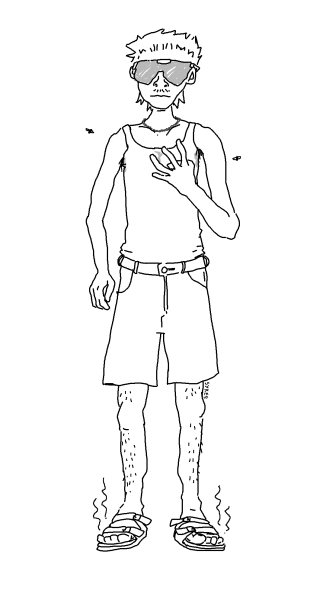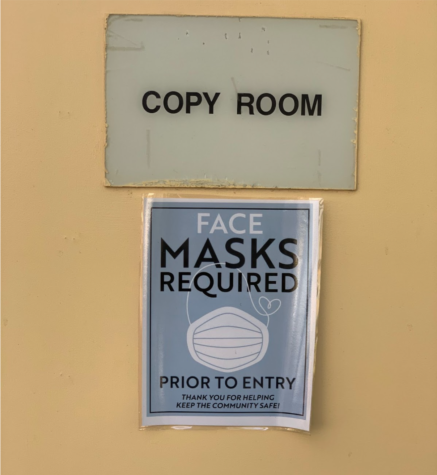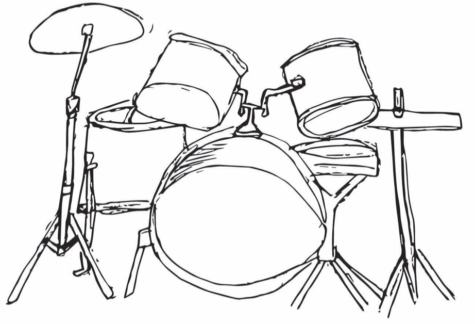Only going up: The spring 2020 grading system
The COVID-19 pandemic has thrown the entire global population into a spin. High school and college students are no exception. School closures are a significant change, forcing adaptations such as learning in a completely different environment, mostly teaching oneself curriculum, and with limited guidance from teachers who are also adapting. Not to mention, skills such as time management have needed to be picked up effectively and outrageously fast.
As the school year comes to an end, questions have been raised about how semester grades will be given. Suffering the loss of usual structures to base grading off of (attendance, in-class participation, etc.), the Tamalpais Union High School District has proposed a solution: pass/fail grading.
Simple and fair to students, the new system undoubtedly will be a weight lifted off the shoulders of many. When asked about the grading formula, Drake High School Administrative assistant Jolie Jacobs wrote in a school-wide email, “Teachers will provide 33% for R4 and 66% for R5-R6, averaged as a percentage, which translates to a final grade at S2. An ‘A’ for R5-R6 equates to 100%.”
All students “in good standing” (demonstrating effort) will be given an A. This is good news, as students are put in optimum conditions to raise their grades. If a student with a 78%, or ‘C’, for R4 continues to show effort they will earn their 100% for R5 and 6 and will end the year with an 93%, or an ‘A’.
Concerns have been expressed from hardworking students fighting to keep up their high GPA. Their worries are valid. Because all students “in good standing” receive A’s for R5 and 6, passing grades appear to be spread about by teachers like Oprah on Oprah’s Big Give. As true as this concern is, this system is just helping students improve their grades. Consider it like grading on a curve. Those at the top keep their grade, while those further down get pulled up by a strong, grade-saving force that is pass/fail.
If a student were to not put in any effort at all (which is tempting as passing seems exceedingly easy) their grade becomes “incomplete”. So preventative measures for accountability are in place. As the name suggests, an incomplete grade will not count for semester credit and will have to be made up over the summer.
In the big picture, pass/fail grading smooths out unevenly distributed privilege in students’ living situations. No matter what the circumstances, spending nearly 24 hours, 7 days per week at home can get mentally exhausting from the lack of routine or social interaction. However, some live in households or even rooms shared with multiple families and family members. Others may also live with parents who still have to go out and work at an “essential” job, or worse, are unemployed. The district has taken these different circumstances into account. The lack of penalisation may attract lower effort levels, but it is unfair to assume, for example, that everyone has access to reliable Wi-Fi or even the technology to view assignments.
With pass/fail grading, teachers now wield even more power. It is up to their discretion if a student’s effort is deserving of a passing grade. If not, the students are doomed to repeat the class for needed credits. The reality is that this, too, isn’t worth stressing about. Many classes (i.e. English, history, art, foreign languages, and more) are already based on subjective grading: when the teacher determines the grade- opinion-based grading. Even seemingly objective classes, such as math, can be quite subjective, determining a score based off of work shown or how close their answer was to the actual one.
The new grading isn’t much different than the old. In addition, seniors have a higher chance of passing, increasing chances of graduation and receival of a diploma.
Valid concerns have been expressed from all angles, but the pass/fail grading system meets all needs. It evens out differences in learning environments, increases chances of passing for struggling students, allows top students to keep their grades, and structure-wise, isn’t far off of the original system. Rest easy, because your grade is only going up.
Your donation will support the student journalists of Archie Williams High School. Your contribution will allow us to purchase equipment and cover our annual website hosting costs. Each donation will receive a magazine subscription for a year (6 copies a year), and become a part of the important work our publication is doing.
$35 -- Subscription to the magazine
$50 -- Silver Sponsorship
$75 -- Gold Sponsorship
$100 -- Platinum Sponsorship















